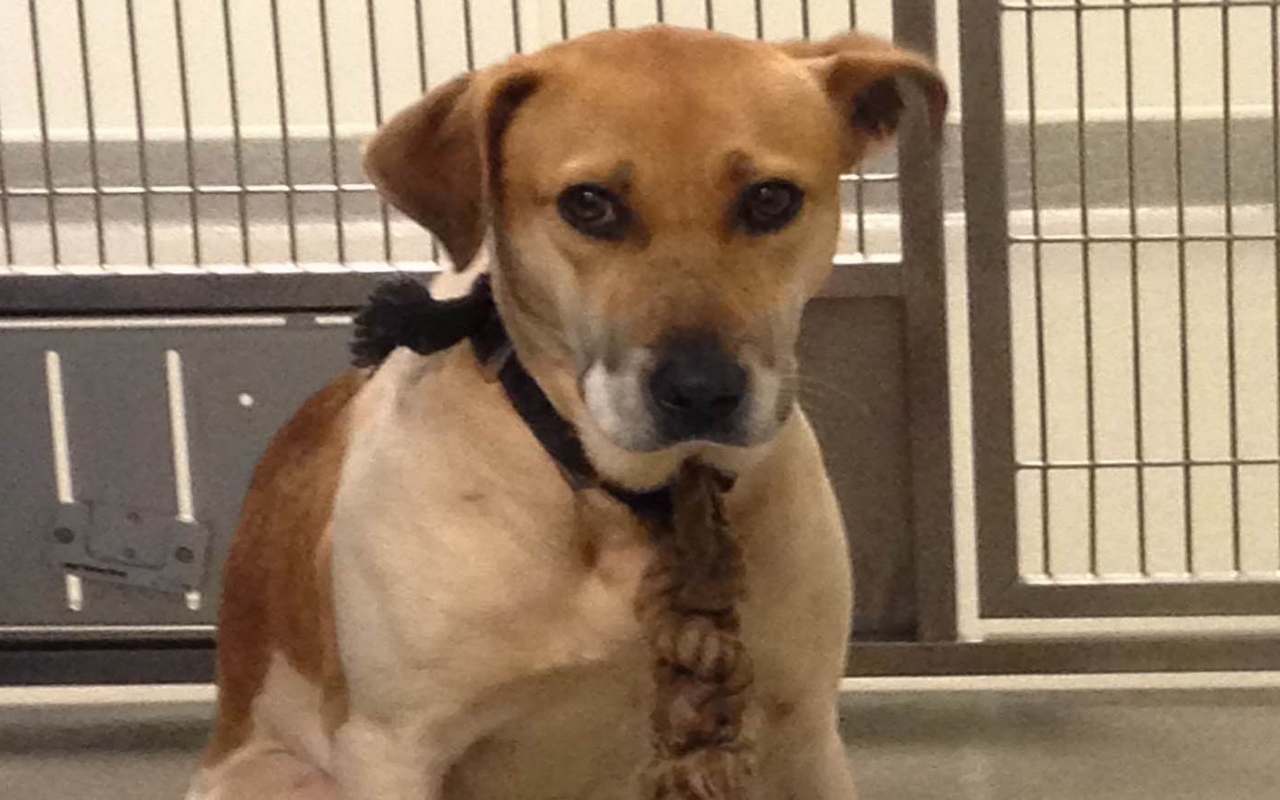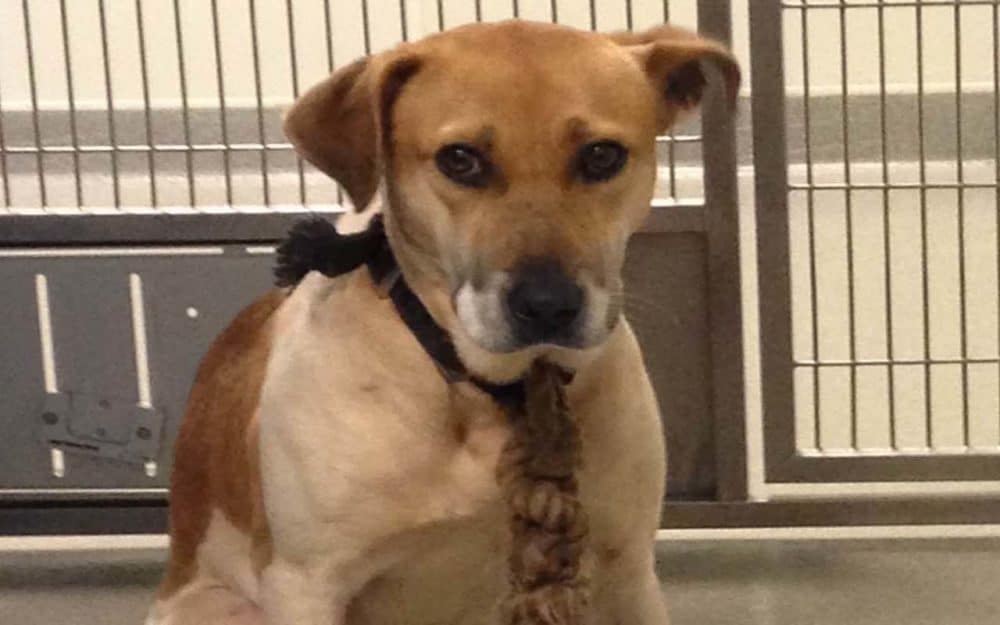from fearful to engaged: expanding the training conversation
How can you quickly transform a dog from growling and avoiding people to a willing participant in a training dialogue? The answer is skillful application of behavior science!
Animal control brought Misty into the shelter on a catch pole. She growled, tried to escape, and cowered in the back of her kennel—unable to greet people or even take food. An old, thick, tie-out rope was still attached to her collar.

KPA faculty member and board certified applied animal behaviorist (ACAAB) Lindsay Wood Brown, applied animal behaviorist at the shelter, recognized the need for swift intervention. She assembled a small team and a plan to support Misty. Lindsay’s goal was to teach Misty to willingly accept handling so that the tether could be removed and she could be leashed safely to walk outdoors. Lindsay wanted to accomplish all of this in less than 48 hours!
The first step was to establish Misty’s kennel as a safe, comfortable space where only pleasant experiences would occur. Lindsay’s team placed high-value, mini meals in Misty’s kennel throughout the first day. Lindsay looked for overt changes in behavior—tail wagging, eating, and approaching the front of the kennel—as indicators before she attempted interaction beyond meal delivery. Within 24 hours, Misty readily approached the kennel front, wagged her tail, wiggled her body, and licked her lips when she spotted one of her “friends”.
The next step was to begin a training conversation. Lindsay used a clicker and treats to teach Misty to touch her nose to Lindsay’s hand, a building block for training and tactile interaction that Misty mastered quickly. Within 48 hours, Misty accepted the removal of the tether and walked on a leash into the sunshine, well on her way on a successful journey toward adoption.
“Reinforcement history develops swiftly into a relationship and opens the door to a full training conversation. It’s fundamental to my behavior work in shelters and with private clients,” says Lindsay. “The value of reinforcement history and how we can harness it to teach animals is explored and applied in KPA’s Dog Trainer Professional program.”

Reinforcement history develops swiftly into a relationship and opens the door to a full training conversation.

Interested in expanding your training dialogue with the animals in your life? Apply to the Karen Pryor Academy Professional Dog Trainer program with Lindsay Wood Brown here.

